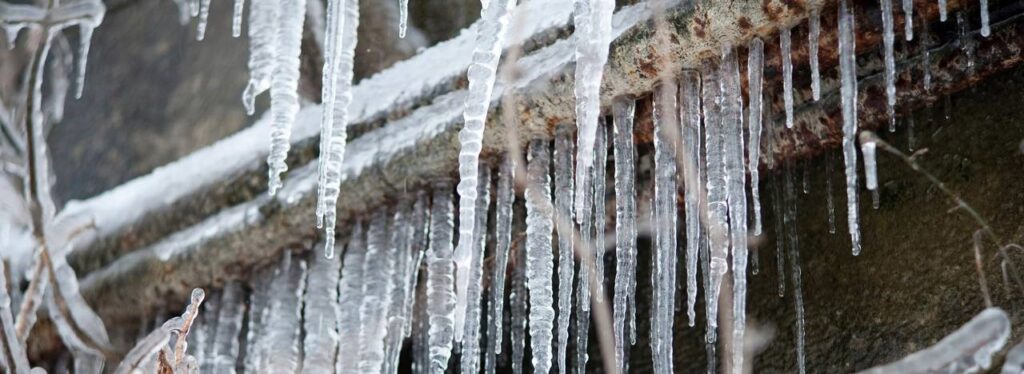In this article down the page you can discover some dependable expertise when it comes to How to Prevent Your Pipes From Freezing.

Cold weather can damage your pipes, particularly by freezing pipelines. Below's how to avoid it from happening and what to do if it does.
Introduction
As temperature levels decrease, the risk of icy pipes boosts, potentially resulting in costly repair services and water damages. Recognizing just how to avoid frozen pipes is vital for house owners in chilly climates.
Understanding Frozen Pipelines
What creates pipes to ice up?
Pipelines freeze when revealed to temperatures below 32 ° F (0 ° C) for extended durations. As water inside the pipelines freezes, it increases, taxing the pipeline walls and potentially creating them to rupture.
Risks and damages
Icy pipes can lead to water interruptions, home damage, and expensive repair services. Burst pipes can flood homes and cause comprehensive architectural damages.
Indicators of Frozen Pipes
Determining icy pipes early can prevent them from rupturing.
Just how to recognize frozen pipelines
Look for decreased water circulation from taps, uncommon smells or noises from pipelines, and noticeable frost on revealed pipes.
Prevention Tips
Protecting prone pipelines
Wrap pipes in insulation sleeves or use heat tape to shield them from freezing temperature levels. Focus on pipelines in unheated or exterior locations of the home.
Home heating methods
Maintain interior rooms adequately heated up, specifically locations with plumbing. Open up cupboard doors to permit warm air to circulate around pipes under sinks.
Protecting Outside Pipes
Yard hoses and outdoor faucets
Disconnect and drain garden hose pipes before wintertime. Mount frost-proof faucets or cover outside faucets with protected caps.
What to Do If Your Pipes Freeze
Immediate actions to take
If you think frozen pipes, maintain taps available to soothe stress as the ice thaws. Utilize a hairdryer or towels taken in warm water to thaw pipes slowly.
Long-Term Solutions
Architectural changes
Consider rerouting pipes away from outside walls or unheated locations. Include added insulation to attics, basements, and crawl spaces.
Upgrading insulation
Invest in top notch insulation for pipelines, attics, and wall surfaces. Proper insulation assists preserve constant temperatures and reduces the risk of frozen pipelines.
Final thought
Preventing frozen pipelines needs positive actions and fast reactions. By comprehending the causes, signs, and preventive measures, property owners can shield their pipes throughout winter.
5 Ways to Prevent Frozen Pipes
Drain Outdoor Faucets and Disconnect Hoses
First, close the shut-off valve that controls the flow of water in the pipe to your outdoor faucet. Then, head outside to disconnect and drain your hose and open the outdoor faucet to allow the water to completely drain out of the line. Turn off the faucet when done. Finally, head back to the shut-off valve and drain the remaining water inside the pipe into a bucket or container. Additionally, if you have a home irrigation system, you should consider hiring an expert to clear the system of water each year.
Insulate Pipes
One of the best and most cost-effective methods for preventing frozen water pipes is to wrap your pipes with insulation. This is especially important for areas in your home that aren’t exposed to heat, such as an attic. We suggest using foam sleeves, which can typically be found at your local hardware store.
Keep Heat Running at 65
Your pipes are located inside your walls, and the temperature there is much colder than the rest of the house. To prevent your pipes from freezing, The Insurance Information Institute suggests that you keep your home heated to at least 65 degrees, even when traveling. You may want to invest in smart devices that can keep an eye on the temperature in your home while you’re away.
Leave Water Dripping
Moving water — even a small trickle — can prevent ice from forming inside your pipes. When freezing temps are imminent, start a drip of water from all faucets that serve exposed pipes. Leaving a few faucets running will also help relieve pressure inside the pipes and help prevent a rupture if the water inside freezes.
Open Cupboard Doors
Warm your kitchen and bathroom pipes by opening cupboards and vanities. You should also leave your interior doors ajar to help warm air circulate evenly throughout your home.

I hope you enjoyed reading our section on How To Avoid Freezing Pipes. Thanks for taking the time to read through our blog post. In case you liked our article kindly be sure to share it. Thank-you for your time spent reading it.
Call Today